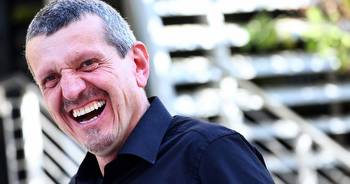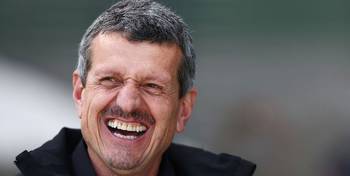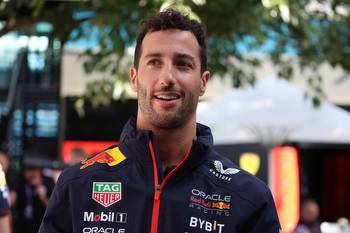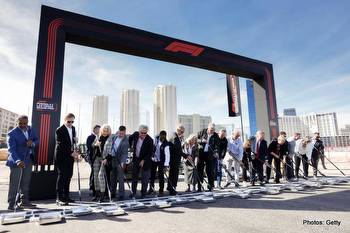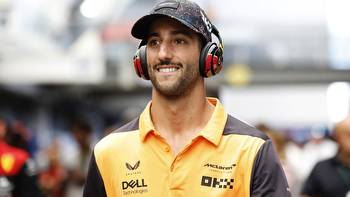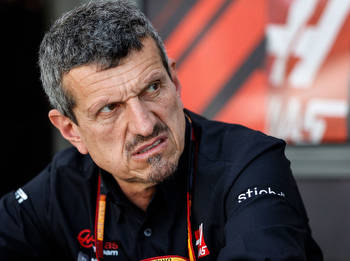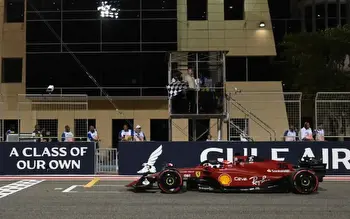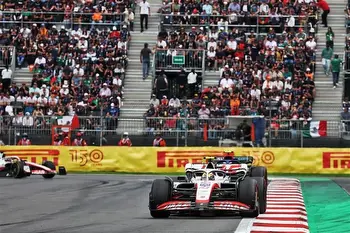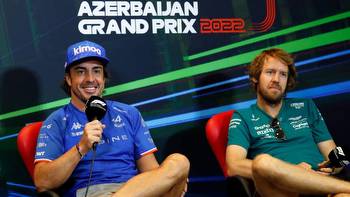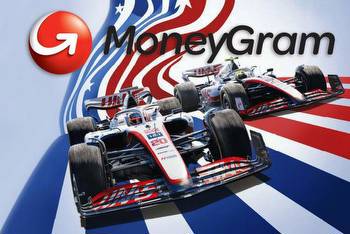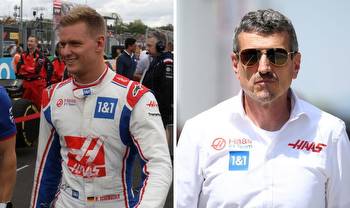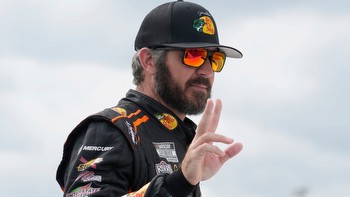The unexpected, covert birth of Haas: F1’s original, American team

They call Formula One the “pinnacle of motorsports” for good reason. The global series features some of the world’s fastest and most sophisticated cars, brilliant engineers, and talented drivers. For the people in the sport, the climb to reach that pinnacle is the most daunting part of their careers.
The Athletic’s F1 coverage is designed to illuminate those sagas, and that’s what we’ll be doing in Origin Stories. Follow along as we take you beyond today’s news to understand how today’s players earned their starring roles.
KANNAPOLIS, N.C. — Standing inside the lobby of Haas F1’s headquarters, it feels like a normal team facility, though a tad on the quieter side for a Monday afternoon.
Previous Haas F1 cars are over to the right while team owner Gene Haas’ personal cars are on display to the left. Throughout the entire building, images of the team — including previous drivers and big moments — decorate the walls. The conference rooms are named after Formula One circuits like Silverstone.
Actual F1-focused employees, however, are scarce in the building.
The race bay areas are all about NASCAR, as Stewart-Haas Racing workers move around Xfinity driver Riley Herbst’s car. These employees greatly outweigh the F1 team members, most of whom are working in upstairs offices.
It may sound strange to hear of a practically vacant F1 facility in North Carolina, but it’s indicative of how Haas balances its future hopes with the reality of its creation. Unlike other constructors, Haas’ F1 team is split among three countries: administration and a machine shop here in Kannapolis, race operations in the U.K., and design, aerodynamics and CFD in Maranello — yes, with Ferrari. The two teams have a close relationship, akin to the sister team setup of Red Bull and AlphaTauri.
“Is it ideal? No,” team principal Guenther Steiner said to The Athletic while sitting in one of the team’s conference rooms. “With our business model, is that the only way to do it? Maybe not the only model, but maybe the best. I think it’s the best model.”
Haas F1 team is unlike any of the others. How the team came together broke the status quo and set new precedents — and the dream all began after another prospective American team fell apart.
It began over dinner
In 2010, F1 looked poised to welcome an American team to the grid for the first time since the 1970s.
The simply named US F1 was headquartered in Charlotte, N.C. — NASCAR territory — and had plans for a base in Spain to help with transportation logistics during the European stretch of the calendar. Peter Windsor and Ken Anderson, who both have F1 and motorsport work experience, founded the team, and its primary investor was YouTube co-founder Chad Hurley.
Financial woes eventually struck, and Windsor contacted Steiner at one point to see if the former Red Bull Racing technical operations director could help “save his investment.” Steiner recalled, “I told him, ‘I cannot, Pete. It’s too late.” Their race car hadn’t been fully built yet as of February 2010, with races set for March. The team never made it to the grid.
The idea of a F1 team with an American investor, though, intrigued Steiner. He was running his own company, Fibreworks Composites, but began mulling a business plan. It wasn’t until the auction of US F1’s assets that the plan (somewhat) got into motion.
There, Steiner (who had also worked in NASCAR for a spell) ran into Haas co-president Joe Custer. They caught up before splitting ways.
“I said, ‘Oh maybe I can speak with Joe (and) then he speaks with Gene Haas.’ So I texted Joe, ‘Hey, if you have time, I got something to show you,’” Steiner said. He and Custer met at a Starbucks, and Steiner walked Custer through his plan. Custer felt it looked okay, but ultimately he needed to pass it along to Haas. After all, it was Haas’ call.
A month or so later, Steiner got a call asking if he wanted to have dinner with Haas because Haas was in the Charlotte area for NASCAR. From that Saturday dinner onwards, Steiner and Haas spoke at least once or twice a week. They’d meet at Haas’ office or catch an F1 race at Custer’s home whenever Haas was in town.
And that’s how it stayed for a year or so — operationally “simplistic.”
“It was only mainly Gene, Joe Custer, and myself discussing this. There was not a big group of people. He didn’t get advice or some lawyer’s say. It was just discussed and how simplistic we approached it. People will be surprised about it,” Steiner said.
“Can you do it now without all this stuff? Maybe not. But at the time, we’d never employed a lawyer to get a license. The license application, I did it all myself. You know, a laptop, nothing else. It was a laptop and me.
“…If I would need to do it now,I don’t know if I could keep it as simple.”
‘Never be too proud to ask people for help’
F1 is sometimes referred to as a village.
Nearly everyone knows each other as the paddock largely travels together. The rumor mill turns, and it’s a fairly chatty group — even among the team principals. Steiner joked, “We cannot keep our (mouths) shut.” Keeping a secret quiet is rare, much less keeping rumblings of a potential new team at bay for over a year.
“People sniffed around, but nobody really took it seriously,” Steiner said, adding that no one really knew who Gene Haas was when they went to the 2013 U.S. Grand Prix together. The only ‘outsider’ out of the trio that was in the know before the Haas F1 team was announced was then-Ferrari team principal Stefano Domenicali.
To succeed in F1, Steiner realized this team needed to operate differently than the rest of the grid. When looking at the new teams entering the sport at the time, he said, “They all did the same business model, just do the same as the other ones. But then I was like, ‘You know, the other ones are pretty good. So if I just do the same, why would I succeed? More of the same doesn’t make you succeed, because you need more talent, more money.
“We didn’t have either.”
This is where Ferrari comes into play. Haas essentially purchased as many components as it legally could from Ferrari. But Domenicali was onboard long before Steiner had an investor. “I asked him, “Do you support me with this if I can find an investor?’” Steiner recalled. The two were good friends. “He said, ‘Yeah, if you find somebody, let’s do it. Your idea is not bad.’”
Many may wonder why Ferrari opted to work with Haas in an unprecedented way. Unlike Red Bull and then-Toro Rosso (now AlphaTauri), who have a tight relationship, Ferrari and Haas weren’t owned by the same parent company. What was in it for F1’s oldest team?
“I think their interest was to make sure Formula One, in general, is stable with good teams, and they trusted in Gene that he wants the goal too, because obviously I went to see Ferrari with Gene because Stefano knew that I don’t have the money. I needed to go there with (an) investor.”
No one had done what Haas F1 Team was shaping to do, but it was perfectly legal under the regulations at the time. Steiner said whenever he had a doubt, he checked with then-FIA technical director Charlie Whiting to make sure he understood what he was reading correctly and that it was allowed. “People complained (about) what we did. I said, ‘Everybody else could have done it.’ I didn’t invent regulations. I just read them, and this is allowed, to do what we did.”
Steiner added, “Behind us, they closed a lot of these loopholes. They kept on closing, closing, but we always found something new to put us in the position we’re in now — that we are (a) solid F1 team, because it’s very difficult to be a solid F1 team.”
Steiner and Gene Haas’ mantra was simple in building their team: “Never be too proud to ask people for help.”
Enjoying humble pie
Haas looked set to launch in 2015 but decided to delay a year.
Steiner recalled some pushing the team to debut while others, like Domenicali, felt the team should take their time. “It was to eat a little bit of humble pie,” Steiner said, “because people (are saying), ‘Oh, you’ll never get ready because if you cannot do it in whatever months, you will never be doing it.’” The team, though, “wanted to get it right.”
Steiner feels confident that if they rushed to make the grid in 2015, Haas F1 Team wouldn’t be around today. The team made its debut a year later and secured 29 points in its inaugural campaign, scoring 18 of those points in its two first grands prix. The “controlled-cost model with Ferrari” proved to be a success.
Back in that era of F1, there was no cost cap, and Gene Haas wasn’t willing to spend half a billion dollars like Mercedes would, Steiner said. But a decade or so ago, Haas did build the North Carolina facility in case things went south and they needed to build the race cars stateside. At the time, it was big enough, but now, it’s “too small” to run a team, according to Steiner.
Fast forward to 2023, the relationship between Haas and Ferrari is still as tight as it was when the team began, even with the numerous team principals that have come through to lead the Prancing Horse while Steiner stayed at the head of Haas. The staff has grown from around 130-140 people to approximately 210, according to the team principal. That’s tiny compared to the likes of Mercedes and Red Bull, which have 1,000 or more on staff. But between the cost cap and its business model, Haas can’t afford to have people simply to have them.
That being said, they are looking towards the future and how the team can grow, particularly given how stable the current grid is. Steiner said, “F1 is in such a good place now with the 10 teams, the other teams will start to complain that this is not good for the sport that somebody can buy other people’s stuff. So we need to have at least a plan and divert on the plan to be self-sufficient, if needed.”
Haas F1 Team is still an underdog story at its core. It went through highs and lows, celebrating mega point hauls and the rare pole position, but faced struggles like the team’s recent performance.
“At the time, we had a lot to prove,” Steiner said about when Haas first entered the F1 grid. “Now, I will say we proved a lot, but we have a long way to go.”
The “Origin Stories” series is part of a partnership with Chanel. The Athletic maintains full editorial independence. Partners have no control over or input into the reporting or editing process and do not review stories before publication.
(Lead image: JOHN THYS/AFP via Getty Images; Design: Eamonn Dalton/The Athletic)

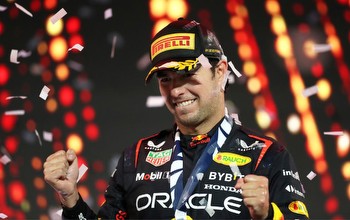
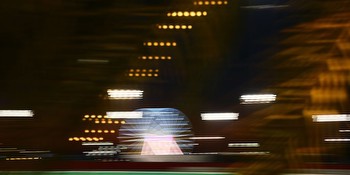





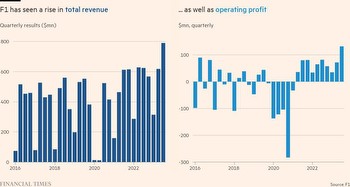
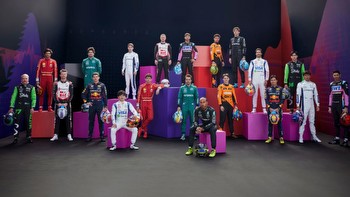

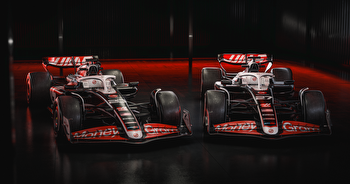

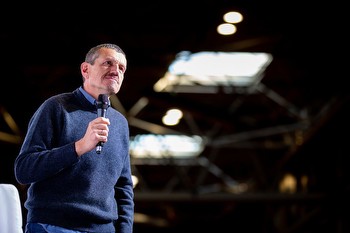
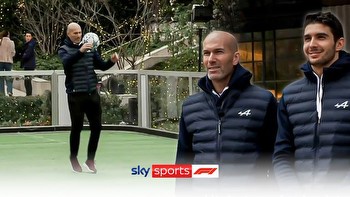
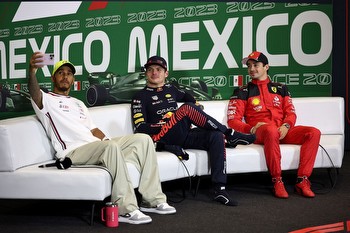
![F1 results: Max Verstappen wins Austrian Grand Prix ahead of Charles Leclerc and Sergio Perez [Video]](/img/di/f1-results-max-verstappen-wins-austrian-grand-prix-ahead-of-charles-leclerc-and-sergio-perez-video-1.jpg)
